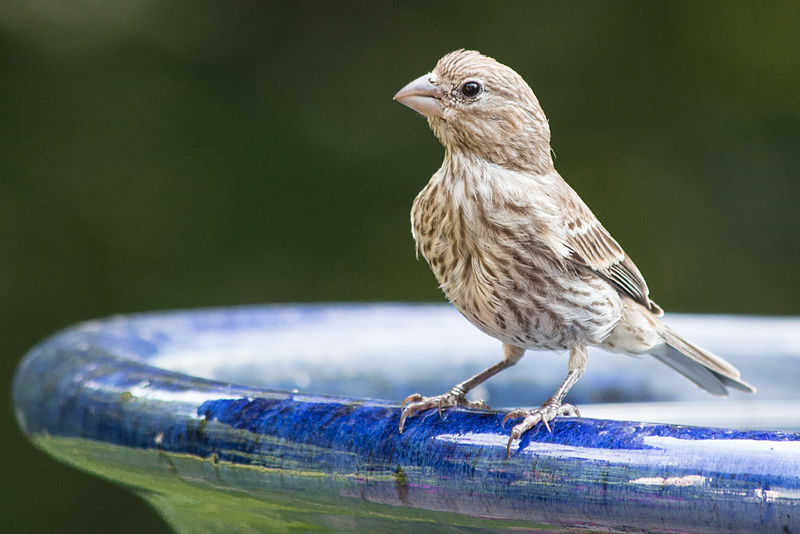House Finch
The House Finch (Haemorhous mexicanus) is a bird in the finch family Fringillidae, which is found in North America. This species and the other "American rosefinches" are placed in the genus Haemorhous by the American Ornithologists' Union but have usually been included in Carpodacus.
This is a moderately-sized finch. Adult birds are 12.5 to 15 cm (4.9 to 5.9 in) and span 20 to 25 cm (7.9 to 9.8 in). Body mass can vary from 16 to 27 g (0.56 to 0.95 oz), with an average weight of 21 g (0.74 oz). Among standard measurements, the wing chord is 7 to 8.4 cm (2.8 to 3.3 in), the tail is 5.7 to 6.5 cm (2.2 to 2.6 in), the culmen is 0.9 to 1.1 cm (0.35 to 0.43 in) and the tarsus is 1.6 to 1.8 cm (0.63 to 0.71 in). Adults have a long, square-tipped brown tail and are a brown or dull-brown color across the back with some shading into deep gray on the wing feathers. Breast and belly feathers may be streaked; the flanks usually are. In most cases, adult males' heads, necks and shoulders are reddish. This color sometimes extends to the belly and down the back, between the wings. Male coloration varies in intensity with the seasons and is derived from the berries and fruits in its diet. As a result, the colors range from pale straw-yellow through bright orange (both rare) to deep, intense red. Adult females have brown upperparts and streaked underparts.


